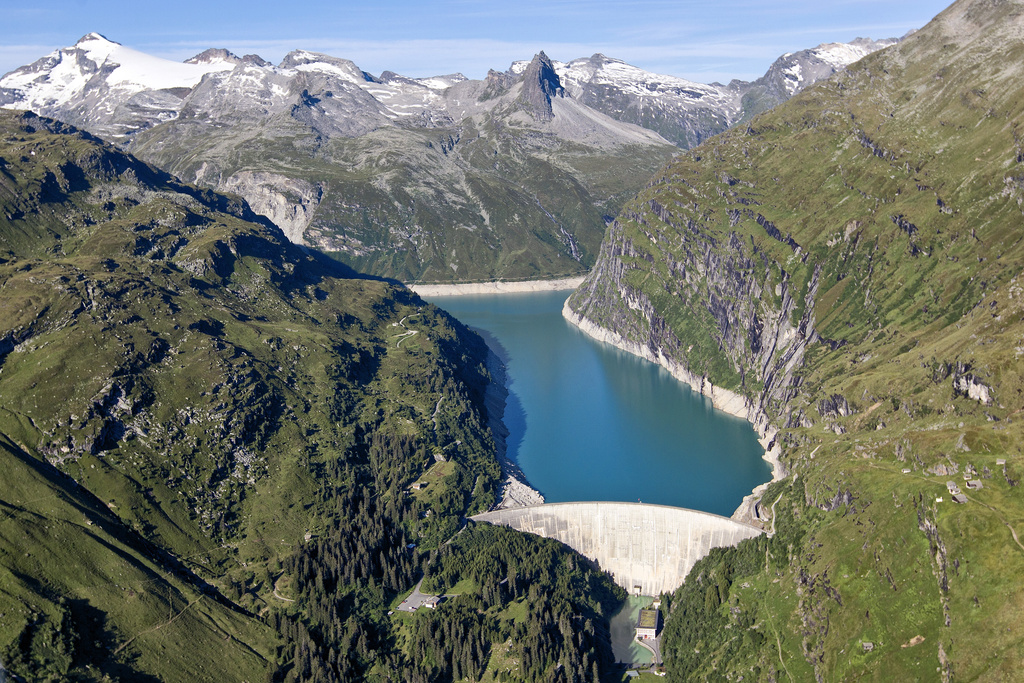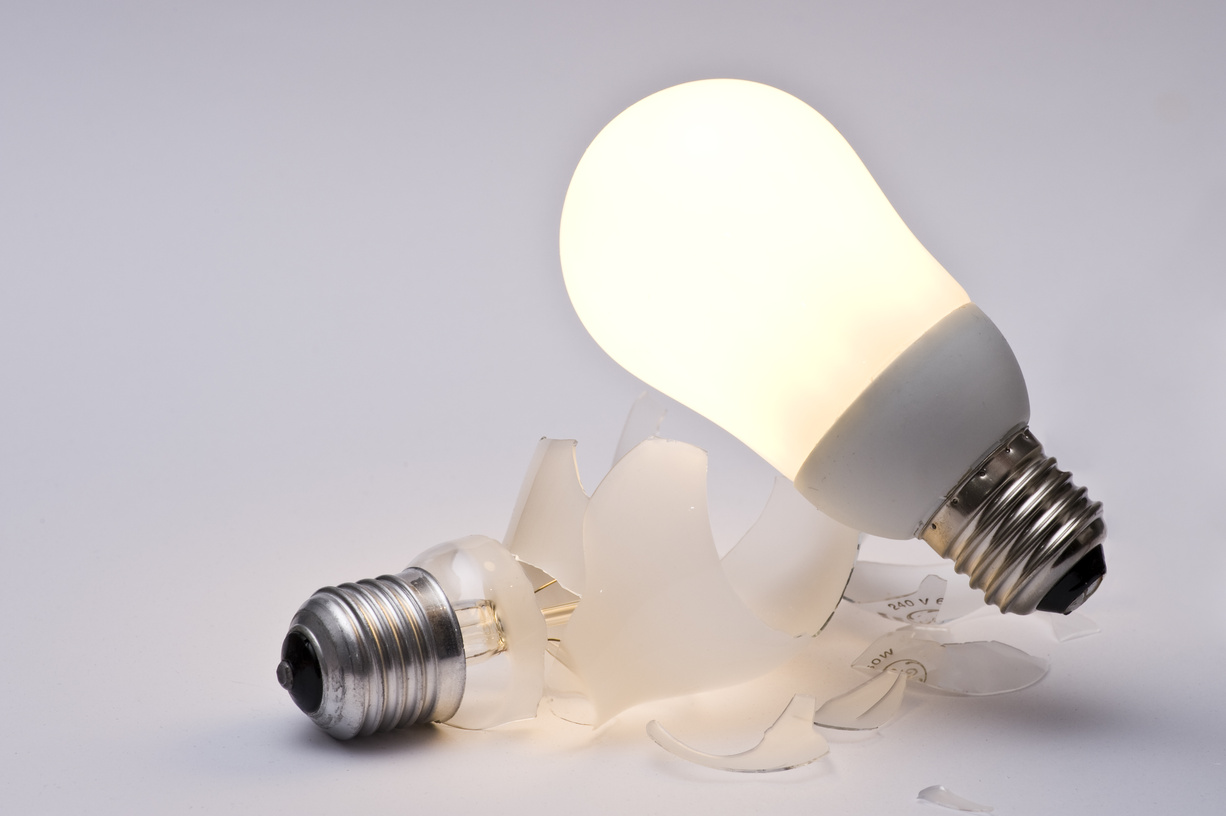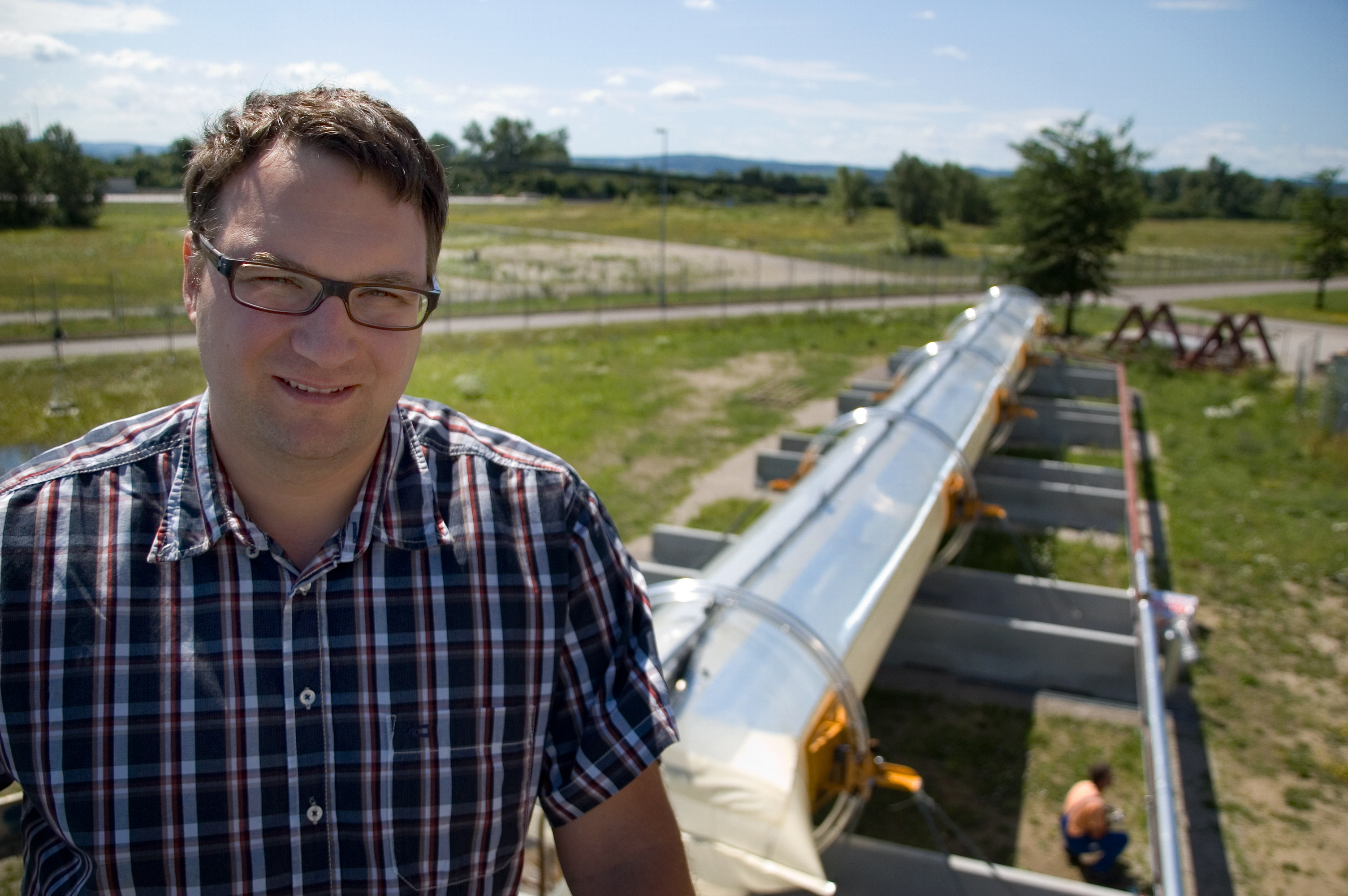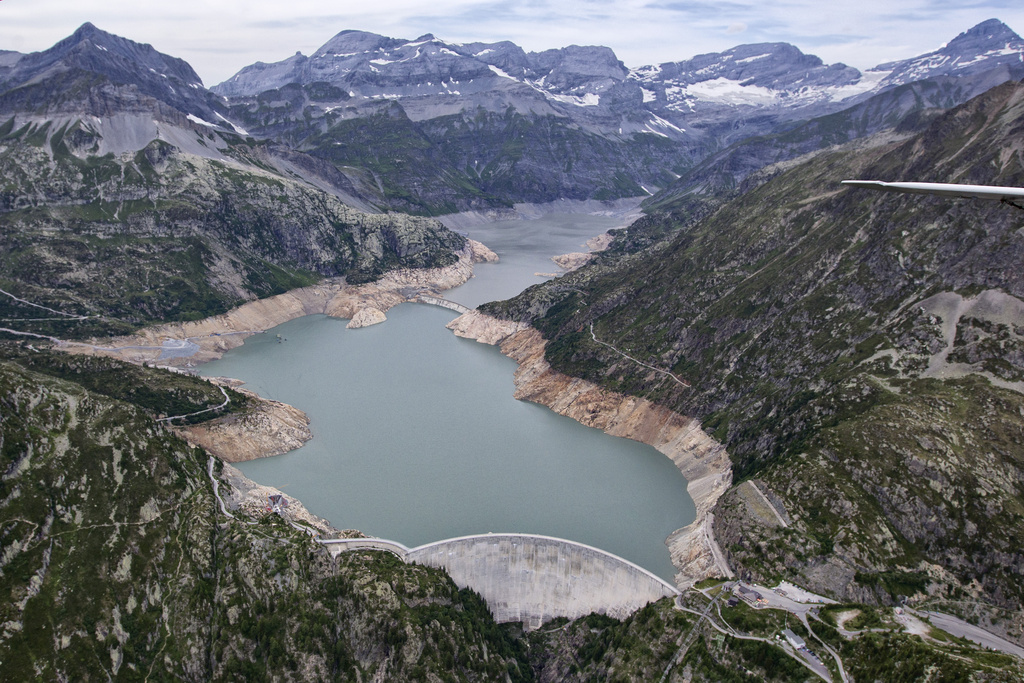Swiss Alps proposed as powerhouse of Europe

Many European countries are turning away from atomic power to focus on renewable energies. Switzerland’s water reservoirs could make up for future gaps in supply.
Snowy mountains, glaciers, streams and torrents tumbling down into the valleys, rivers that irrigate the soil of Europe: the Swiss Alps have always been one of the continent’s most important sources of water.
In the not-too-distant future they may also serve as an energy source, able to store electricity and distribute it to other European countries at times of peak demand.
How to stockpile electric power is going to be one of the principal problems to be solved in the coming decades.
To combat climate change, the member states of the EU have adopted some ambitious objectives: by 2020 renewable energies are to provide 20 per cent of the total energy consumed and to meet 33 per cent of the demand for electricity. This quota is intended to increase considerably by 2050, not least because several European countries have decided to give up their reliance on atomic energy.
Giving up nuclear power and reducing consumption of fossil fuels would leave a gap that could be filled by wind and solar energy. These are two clean energy sources, but they are somewhat irregular and unpredictable. How can you guarantee electricity supply at times when there is no sun or wind?
Large reserves of electricity
“Thanks to its central position and its flexible production capacity for hydropower, Switzerland can play an important role in electricity supply for the consumers of the EU, when the wind isn’t blowing in the north of Europe and the sun isn’t shining in the south”, as European Energy Commissioner Günther Oettinger pointed out last year.
In fact, there are some 200 pump-storage stations in the Swiss Alps which represent the most economic and efficient technology for storing large quantities of electric power. Reservoirs and man-made lakes can be filled up by pumping water into them which is then released downhill to produce electricity at times when other sources are lacking.
Today these stations are used to regulate production of electric power in Switzerland, but in the future they could also compensate for power scarcities arising in other European countries.
In a report presented on April 18, along with a new “energy strategy 2050”, the Swiss government proposed using the pumped-storage stations as a powerhouse for Europe.
New projects
Given that construction of new man-made lakes in the Alps is likely to raise opposition, the government sees great development potential in pumped-storage stations (see diagram). These stations could be added on to the existing reservoir system.
At present the pumping stations produce no more than 1.5 TWh (terawatt hours). However, five or six stations are now being designed or built which would increase production within a few years to 7.5 TWh.
Among these is a pumping system between Poschiavo Lake and Lago Bianco, in Graubünden, which comes with a price-tag of SFr1.5 billion ($1.57 billion).
“The advantage of these stations is that the water can be pumped upstream when there is over-production of energy and the rates are low. The water is released downstream again when there is a shortage of electricity and the rates are high”, explained Marianne Zünd from the Federal Energy Office.
Agreement with EU
The gap between high and low rates could widen in future, given that energy from sun and wind will fluctuate much more than that produced by atomic power stations. This way it should be possible to amortise the high investments and energy losses connected with pumping (about 25 per cent of the energy generated afterwards by the turbines).
The Swiss government is convinced of this at any rate. On May 1, Energy Minister Doris Leuthard signed a declaration with her opposite numbers in Germany and Austria, whereby the three countries pledged to make the most of the potential of pumped-storage stations.
It is expected that stations will be built for the most part in Austria and Switzerland and will be used to pick up the slack when there are power fluctuations in Germany.
Through such cooperative efforts, Bern hopes to convince the EU to quickly sign a bilateral accord on electric power, which would allow Switzerland access to the European market and the opportunity to position itself as an electricity transmission hub.
“We have to hurry,” Zünd said. “Otherwise Switzerland is liable to be excluded from Supergrid, the new electricity transport network which the 27 states are working on right now.”
Scepticism among environmentalists
The government’s plans to boost the use of hydro power are opposed by some environmental organisations, who are threatening to launch a people’s initiative to protect waterways and their natural surroundings. In their view, excessive exploitation of energy from water would harm tourism, which depends on the beauty of Swiss rivers and lakes.
The pumped-storage stations are also arousing scepticism from an economic point of view. “Currently, transporting electricity from Holland to Switzerland and vice versa loses 20% of the energy. Another 25% is lost by pumping. So there is good reason to wonder if these stations will really be profitable”, says Jürg Buri, manager of the Swiss Energy Foundation.
“The ‘powerhouse for Europe’ strategy can only work if the Supergrid is implemented with technology able to reduce losses in transport, and if all the countries concerned are hooked up to it. But with the present debt crisis in Europe, we need to see when this structure will become a reality”, Buri emphasises.
According to him, instead of focusing on transnational projects, the authorities would be better off supporting development of renewable energies to meet local needs in the coming decades: it is not yet clear how Switzerland will be able to give up nuclear energy by 2034 as planned. “With these European projects, the government mainly wants to keep the big power companies happy, so they can make up for the closing of nuclear power stations and continue to export energy”.
In Switzerland, 56% of electric power is produced by hydro, 40% by nuclear power plants and 4% from other sources.
Switzerland has more than 550 hydroelectric stations of at least 300 kW capacity, which generate 35.8 terawatt hours.
47% is produced by run-of-the-river stations that harness natural downstream flow.
49% is produced by reservoir stations, man-made dams situated mostly in the Alps.
4% is produced by pumped-storage stations. The water is taken from reservoirs or other bodies of water in the valley and pumped to reservoirs at higher elevations. From there it is released downstream again to produce electricity.
The owners of these installations are the more than 200 power companies in Switzerland. Over 80% of their capital is held by cantons and local municipalities, while the remainder belongs to private firms, foreign companies and Swiss Railways.
Following the March 2011 nuclear accident in Fukushima, Japan, the Swiss government decided to halt all construction of new nuclear plants and to shut down all the existing plants by 2034.
On April 18 last year, the government presented its new Energy Strategy 2050 for Switzerland. The government’s proposals, which are being submitted to parliament, include various actions to compensate for the loss of nuclear energy.
Consumption of electric power is to be brought down to about 50 TWh from today’s 70 TWh. Priority will be given to energy efficiency in buildings and in industry.
The production of electric power from renewable sources is to be increased by a third. Currently the contribution of renewable energies (excluding hydro) scarcely meets 2% of electricity needs.
To guarantee security of supply, especially in the winter months, gas-powered stations are also to be built.
From 2020 on, there is to be an increase in hydrocarbon taxes.
(Translated from Italian by Terence MacNamee)

In compliance with the JTI standards
More: SWI swissinfo.ch certified by the Journalism Trust Initiative














You can find an overview of ongoing debates with our journalists here . Please join us!
If you want to start a conversation about a topic raised in this article or want to report factual errors, email us at english@swissinfo.ch.